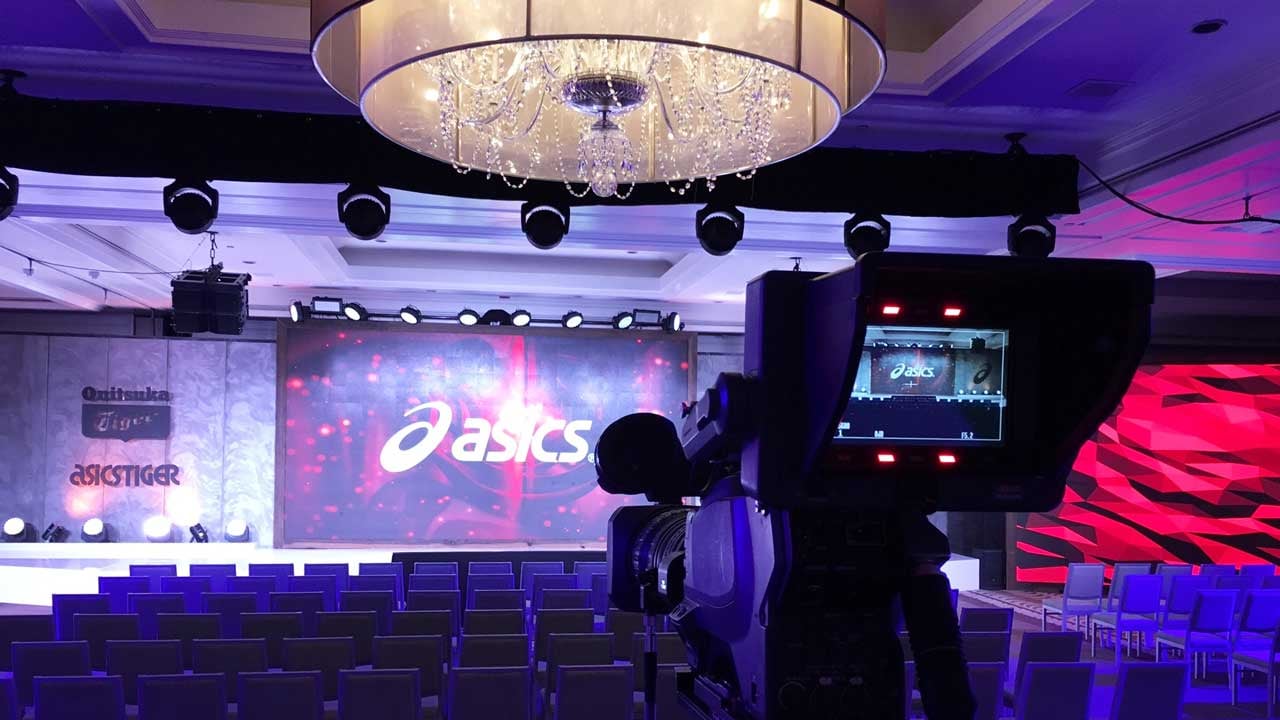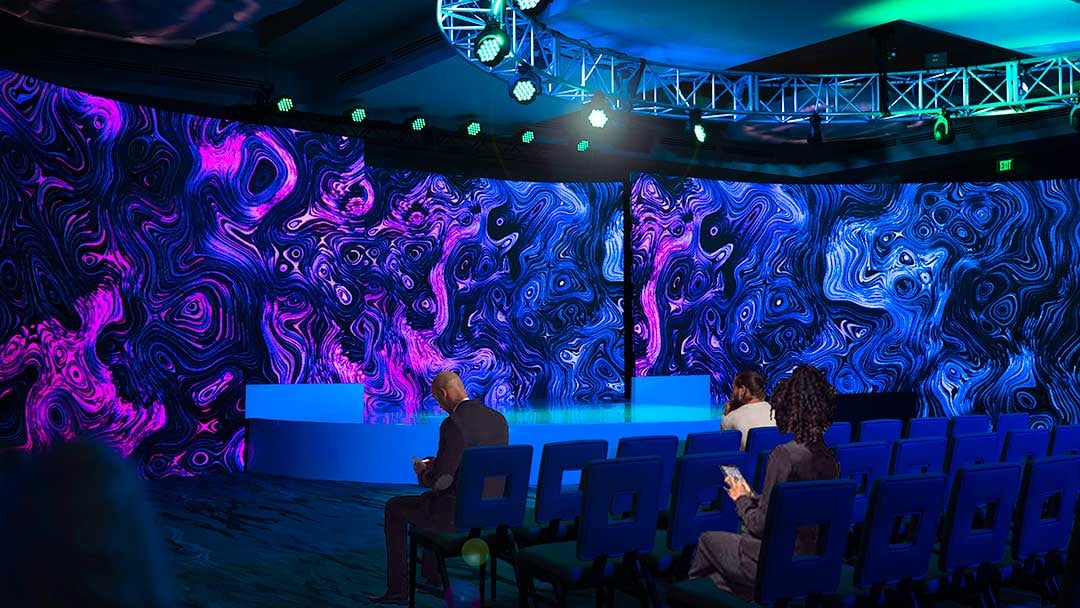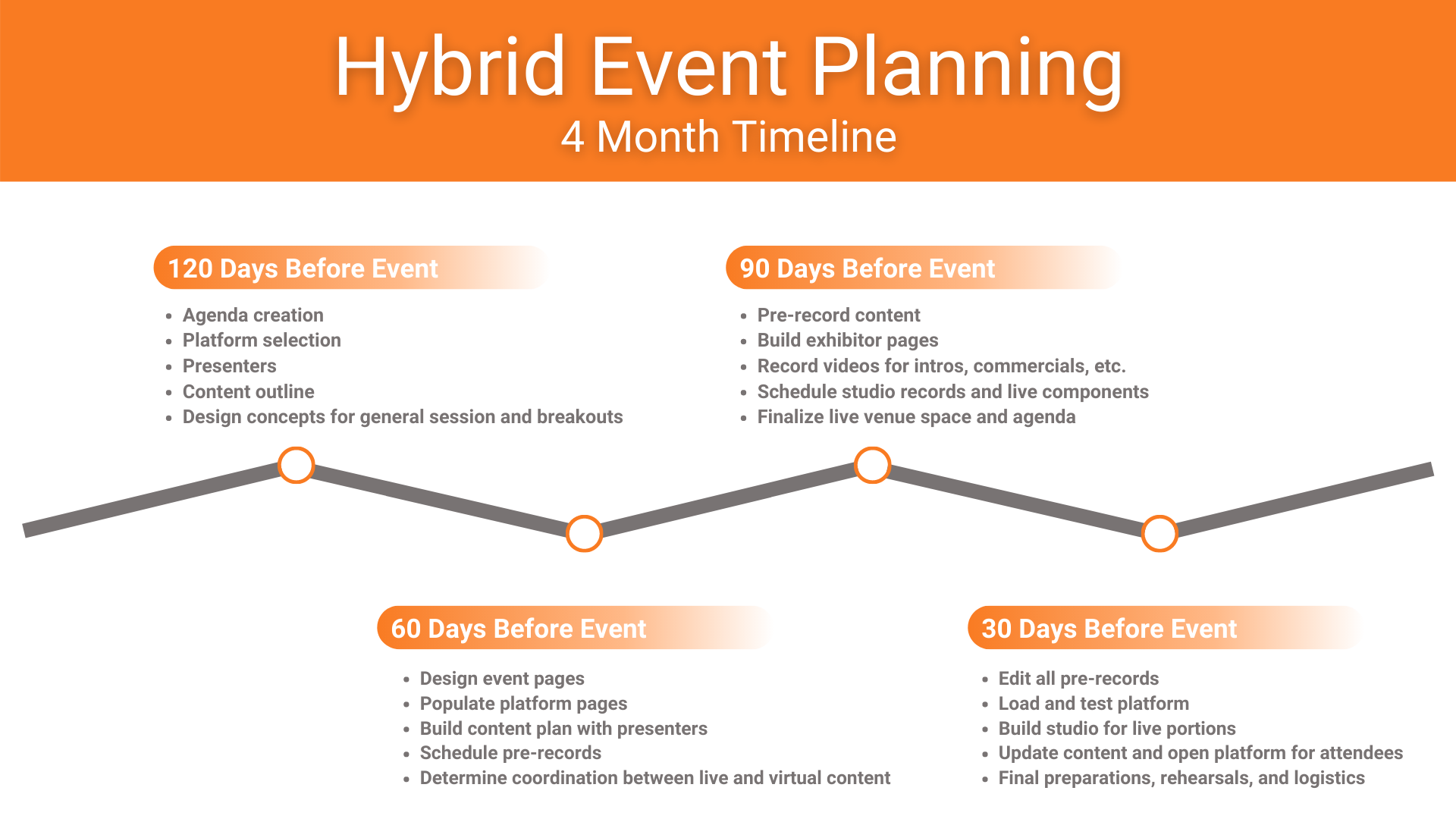Comprehensive Breakdown of How Much a Hybrid Event Costs
AV Production Audio Visual AV Services Event Industry Feb 24, 2021 Brian Lagestee 9 min read

Tips on How to Budget for Your Hybrid Event

Hey everyone! It’s Brian, CEO of Clarity Experiences here. Back in 2020, we wrote a blog discussing the comprehensive breakdown of how much a virtual event costs, and it was a huge hit! We received a lot of feedback from our meeting planners and customers about how helpful it was to see the numbers written out...so we decided, why not do the same thing for hybrid events?! 2021 is going to be all about hybrid events so it’s important to know what a hybrid event is going to run you because it is very different from both live events and virtual events.
As we look at the price structure for hybrid events, it’s important to consider production budgets for both your on-site elements and your virtual elements. Depending on the overall goals and vision for your hybrid event, your production costs could be the cost of your live event + the cost of your virtual event, which would be double the budget you had for your live event in 2019.
That might seem like a high budget, but we will break it all down for you throughout the blog. Before we get started on the cost of a hybrid event and the budget, we want to reiterate that regardless of the type of event you are hosting, it’s important to focus on your audience and your purpose. If you focus on that, your live event, your virtual event, or your hybrid event will be remarkable!
What should my budget be for a hybrid event?
For this blog, we are going to use a scenario where a live event would have 1,000 attendees. If you are going to plan a hybrid event with the same number of attendees, it would have 500 virtual attendees and 500 live attendees. So, what does it cost to put on a hybrid event with 1,000 attendees?n For starters, your hotel space will be the same as it was for the 1,000 person live event due to the AV requirements and the new hotel guidelines for seating. Your AV budget will be the same, even though you have half the amount of in-person attendees.
You are also going to have a virtual budget, which depending on the hybrid event you are planning, could have a general session, breakouts, and other different elements. If you’re going full scale virtual and full scale live to make the experience impactful for everyone, your budget will probably be double in terms of production cost or you can look at it as your live event budget + your virtual event budget combined.
If budget is a concern, as it is with most events, you should consider spending approximately 150% of your 2019 live event production budget if you plan to do a fully hybrid event. This percentage includes providing your entire program to both a live and virtual audience.
While setting a budget for a hybrid event is going to be unique to each event, because it depends on what you want to include and what you don’t, here are a few rough numbers so you can get an idea of what pricing is going to look like:
- 2019 live events that were smaller and lower in budget typically would have cost about $25K-$35K. For this same size event in hybrid, the cost would most likely be around $50K due to some of the fixed costs in both live events and virtual that will be difficult to combine.
- 2019 live events that were mid-size would have cost between $50K-$75K. For this same size event in hybrid, your costs will be between $75K-$120K.
- 2019 live events that were larger full-scale events that had a production budget of over $100K, you should plan at least 150% of that cost or a $150K for a hybrid version.
What are the biggest differentiating cost factors between live and virtual events with hybrid being the in-between?

The cost of live events, virtual events, and hybrid events are all very different, so what are the biggest differentiating cost factors for these in-between hybrid events? In a traditional live event, you can cram your audience into a tight space and the size of your screens fits the space. With hybrid events, you’re going to have half the amount of live attendees, but you’ll still need the same size room you did for the live event. You’ll need the same size room so you can space people out and not have them in such close proximity. The size of your screen, stage, and environment are all going to be the same size as your live event, if not larger since you are trying to social distance your attendees. Your hybrid event may have the same concept as your live event, but your AV requirements are going to scale up in conjunction with the size of the room, which is a big differentiating cost factor.
What is the cost impact on the design side for your general session, live, and pre-records?
If you are getting worried about the cost of your hybrid event and are thinking how we haven’t even talked about the cost impact on the design side, don’t panic. Clarity can absolutely accommodate a modified budget and accomplish a remarkable hybrid event doing so. When talking about the cost impact on the design side, you have to consider your virtual audience in addition to your live audience, whereas in the past, most of the focus was on your live audience in the room.
Catering to your virtual audience while catering to your live audience does take some creative planning. You will need more cameras to do this. Having multiple cameras while switching between different camera angles adds engagement for your virtual audience. A hybrid event will also need to accommodate creative camera work, which will likely include camera equipment and operators close to the stage, or even on stage as you would see at a concert.
In terms of design, Clarity recommends having a broadcast host for your virtual audience. If you choose to have a broadcast host, your live attendees may see a “news crew” roaming around the event asking questions and interviewing attendees, sponsors, and presenters.
Another cool thing you can do on the design side is to have an onsite studio or newsroom. This is an area that you can build into your design where presenters can go to have an intimate Q&A session or recap for your virtual attendees.
If you don’t have a concern about budget, there are some really amazing things we can do on the design side. We can create a virtual studio environment meant for a virtual group, and then you would have your scenic and your normal custom environment for live. You could also have different spaces or even combine them to create a useful environment for both of your audiences. To be more cost-effective, Clarity suggests combining the efforts in the environments but adding different elements. For example, if you’re a live attendee that is sitting in the audience, you can look at the stage, you can look at the Imag screens, and your brain can zoom in on the presenters and see a broader view.
If you’re a virtual attendee that is sitting behind a computer, you can only see what the camera is showing you. At a normal live event, you might have a single camera that shows the presenter on the side screen but nothing else, because the audience can choose what they want to look at. On the virtual side, you might want to consider adding more camera angles to the live event, like we mentioned earlier, to change up the view people are seeing to make it more dynamic, energetic, and impactful. To do this, all you have to do is add multiple camera angles to your normal live general session set to make it more dynamic for the virtual audience.
In a hybrid event, are virtual studios at the same venue space or outside the space? How does that impact cost?
A common question in terms of going hybrid is whether or not the virtual studio is going to be at the same venue space as the live environment. In designing the hybrid event, Clarity suggests creating the general session for the live environment in a hotel like you would for a live event. Then in the same hotel, have another room that looked like my emcee or news desk for the virtual side of things. As the event starts, the virtual news desk talks about the show, trivia, presenters, and essentially gets the audience ready. Once the presenter takes the stage in the general session, the newsroom switches to the live feed at the general session. This makes it so the virtual audience is attending just like the live audience.
Once the presenter takes a break or wraps up the general session, you can cut back to the news desk so the virtual audience still has someone who is guiding them through the event and letting them know what’s happening. This creates a seamless feeling between both the live audience and the virtual audience.
Do meeting planners need to think about pre-recording sessions in a hybrid event?

Yes, yes, yes! Not only will some of your audience need to be virtual, but some of your presenters will also probably need to be virtual for many different reasons. Clarity suggests that you plan for some of your sessions to be pre-recorded or streamed live from a location if someone can’t be there in-person. Clarity foresees that for the remainder of 2021 and possibly even into 2022, we will have a combination of live presenters and remote/pre-recorded sessions, so it’s good to get comfortable with it now.
As we slowly see live events coming back in the form of hybrid, it will not be uncommon for your live audience to view a pre-recorded presentation on the screen or a live stream from a remote location. This is the beauty of the event market adapting to virtual and then transitioning back to live!
What are the offset costs with hybrid events?
In the hybrid world, there is a correlation between your attendee count and your cost. If you have 500 live attendees, there is going to be a cost for the airfare, hotels, etc. just like in a live event environment. Now, you have the costs for those 500 live attendees, but there are also the 500 virtual attendees that you don’t have those same costs for. You might send them some materials for the event or a gift bag, which is still a cost, but you aren’t going to have the travel costs for 1,000 attendees like you would in the past.
Based on that, the budget for the live portion of your hybrid event might be slightly less, but you have to remember the virtual cost, which does bring you back up. In the hybrid environment, you have to decide if you’re going to combine your production budget and your F&B budget. If you’re going to combine your total event budget, it will be more affordable because you are saving on travel costs. If you are just talking about the production budget and all of the other costs are on the side, Clarity recommends planning for 150% of your 2019 live event budget for production if you’re going to do live and virtual.
From a meeting planner's perspective, other offset costs you will encounter with hybrid events are testing costs, and PPE costs, which you didn’t have in 2019. While hybrid events are going to be around 150% of your 2019 live event cost, overall, you can still expect savings if you take into consideration F&B, hotel rooms, and travel.
If you are a meeting planner that is thinking about charging your attendees to fund the hybrid event, determining what your cost will be for virtual attendees compared to live attendees can be a challenge. This decision is primarily based on the value your content and meeting provides to the potential attendee. Pre-planning and budgeting these costs with your production partner as early as possible will help make sure your event is successful and on budget.
How long does it take to plan a hybrid event?

Just like with virtual events, it takes about 4 months to plan a hybrid event for similar reasons. 120 days before the hybrid event, you should create your agenda, select your platform, get your presenters in order, have a content outline, and get your design concepts together for the general session and breakouts.
90 days before the hybrid event, Clarity suggests you pre-record your content, build the exhibitor pages, record the videos for intros and commercials, schedule the studio records and live components, as well as finalize the live venue space and agenda.
60 days before the hybrid event, it’s important to design the event pages, populate the platform pages, build a content plan with the presenters, schedule the pre-records, and determine coordination between the live and virtual content.
Finally, 30 days before the hybrid event, you should edit all the pre-records, load and test the platform, build the studio for the live portion, update the content and open the platform for attendees, and get your final preparations, rehearsals, and logistics in order.
If you stick to this four-month timeline, you won’t feel the stress or pressure of getting everything done as your hybrid event gets closer.
How Clarity Can Help You!
There you have it! Our comprehensive breakdown of what goes into a hybrid event and what you should expect to budget. When it comes to hybrid events, you have a lot of different options you can choose from, and it might seem daunting to get it all started. Clarity is your partner and will walk you through every step of the way. If you are ready to start talking about your next hybrid event, give one of us a call today!

